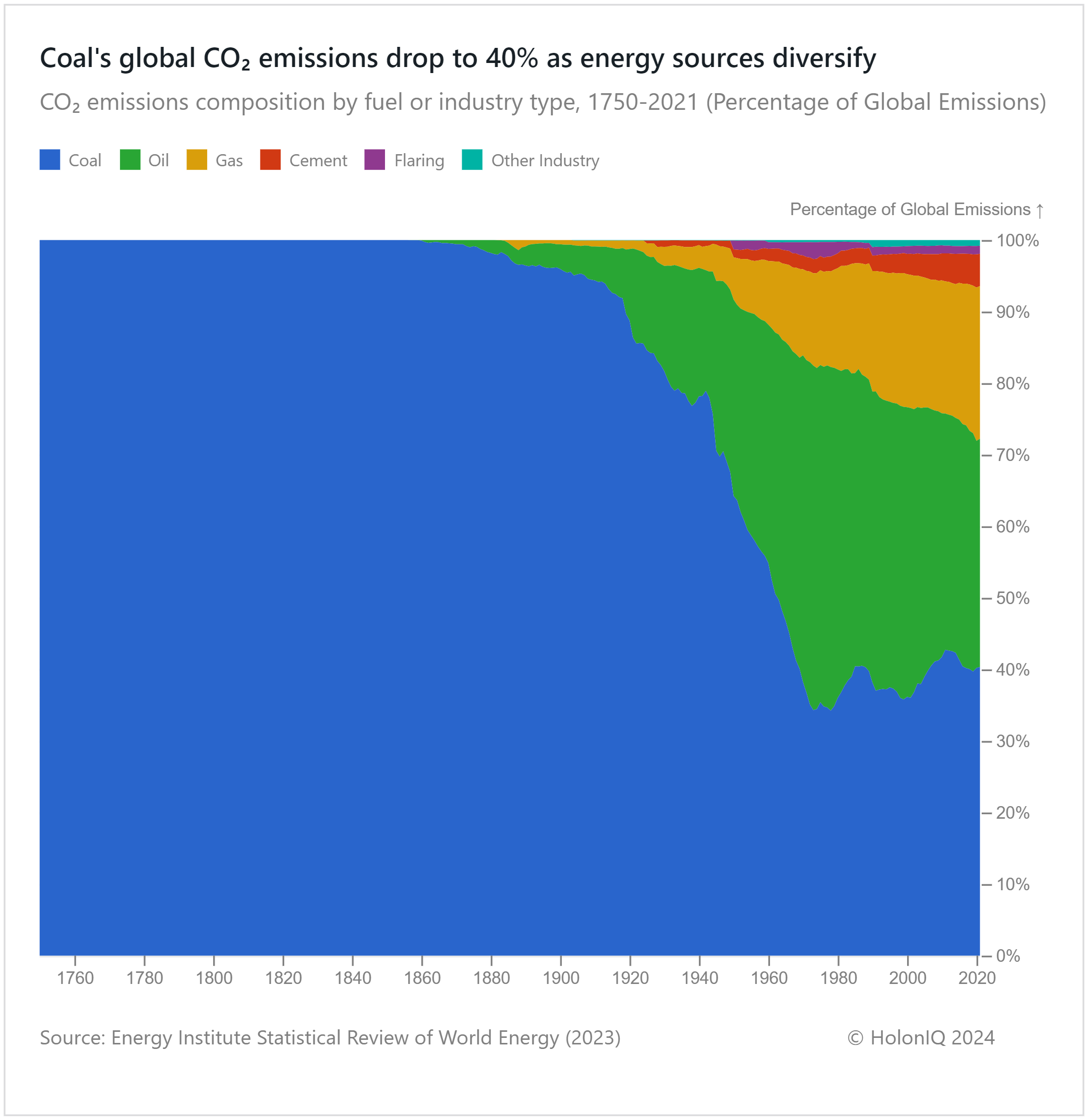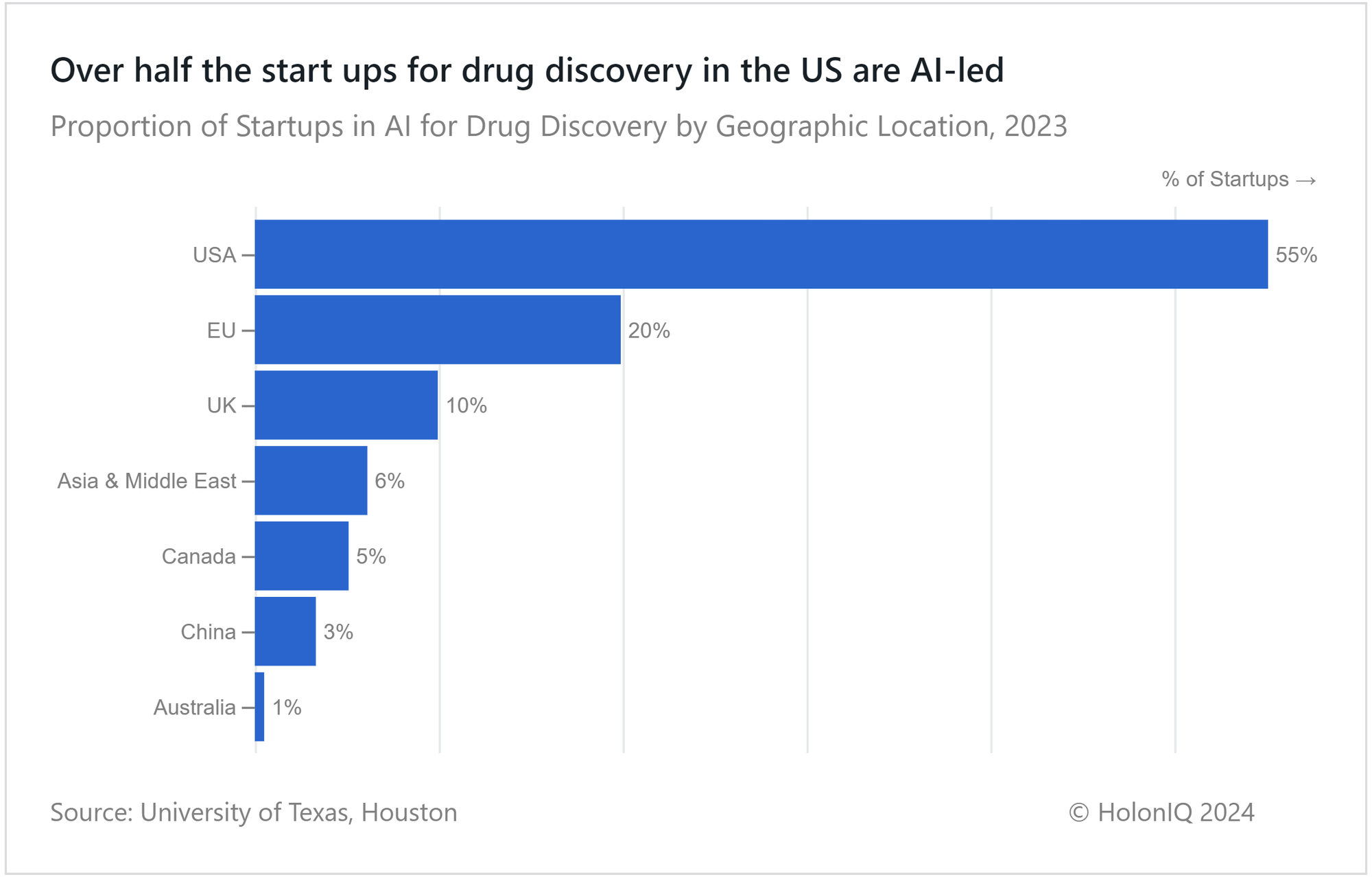⚗️ AI Drug Discovery. 40% Coal Emissions. Training Hours.
Chart of the Day #33 looks at Workforce Training Hours, CO2 Emissions by Energy Source, and AI Usage in Drug Discovery.
Sveiki 🏰
An AI-based new drug development system has been established in South Korea, which preprocesses and compiles 800 million molecular models of major compounds for immediate drug development. China is increasing its reliance on its clean energy corridor, capable of producing 276TWh of electricity per year, reducing coal use by an average of 100m tonnes and catering to the annual energy consumption of 300m people.
Today's Topics
- 🧑💼 Training Hours. ~3x more training for employees
- 🏭 Carbon Emissions. 40% CO2 emissions from coal
- ⚗️ AI Drug Discovery. 55% of US startups use AI for drug discovery
For unlimited access to over one million charts, request a demo.
🧑💼 ~3x More Training for Employees

In 2020, large companies witnessed an almost three-fold spike in training hours, reaching more than 100 hours per employee. A year later, a similar trend was observed in small and medium-sized companies, although not to the same extent. During the pandemic, job losses, coupled with a large number of resignations, left substantial knowledge gaps in some companies that needed to be addressed through additional training. The emergence of new technologies that employees had to adopt, coupled with the shift to hybrid working, imposed a new normal on the workforce, contributing to the additional training hours observed.
🏭 40% CO2 Emissions From Coal

Coal, once the sole source of CO2 emissions, now accounts for only 40% of emissions. However, fossil fuels remain the largest contributors to CO₂ emissions, with oil and gas contributing 32% and 21%, respectively.
A diverse energy mix is a recent phenomenon. In the 18th century, coal and its derivatives became the dominant energy source, replacing traditional sources like wood, beeswax, and sperm oil. The emergence of major oil companies in the 1800s and the rise of automobiles drove the use of oil as a source of fuel, which led to oil surpassing coal as the largest source of emissions in the 1960s. Gas usage also gained momentum during this time as a more efficient source of power generation. While renewable energy has gained traction recently, outpacing fossil fuels as the predominant source of energy production globally remains a distant prospect.
⚗️ 55% of US Startups Use AI for Drug Discovery

Traditional drug discovery is immensely time-consuming, taking 3-6 years for pre-clinical trials and costing millions of dollars. The industry is being reshaped in terms of speed and economy, with over 55% of US startups incorporating AI in the drug discovery process. Harnessing the power of AI has enabled scientists to analyze massive datasets of chemical compounds using high-throughput screening. AI is also used to identify drugs and their interactions with various biological pathways, reveal potential applications for treating different diseases, and tailor treatments for personalized medicine.
The need for physical testing of candidate drug compounds has also reduced since then. 'High-fidelity molecular simulations', which use machine learning, can create complex simulations of biological processes and disease mechanisms, allowing for more accurate predictions of drug behavior and potential side effects.
Like getting this newsletter? For unlimited access to over one million charts, request a demo.
Thank you for reading. Have a great week ahead!
Have some feedback or want to sponsor this newsletter? Let us know at hello@holoniq.com
